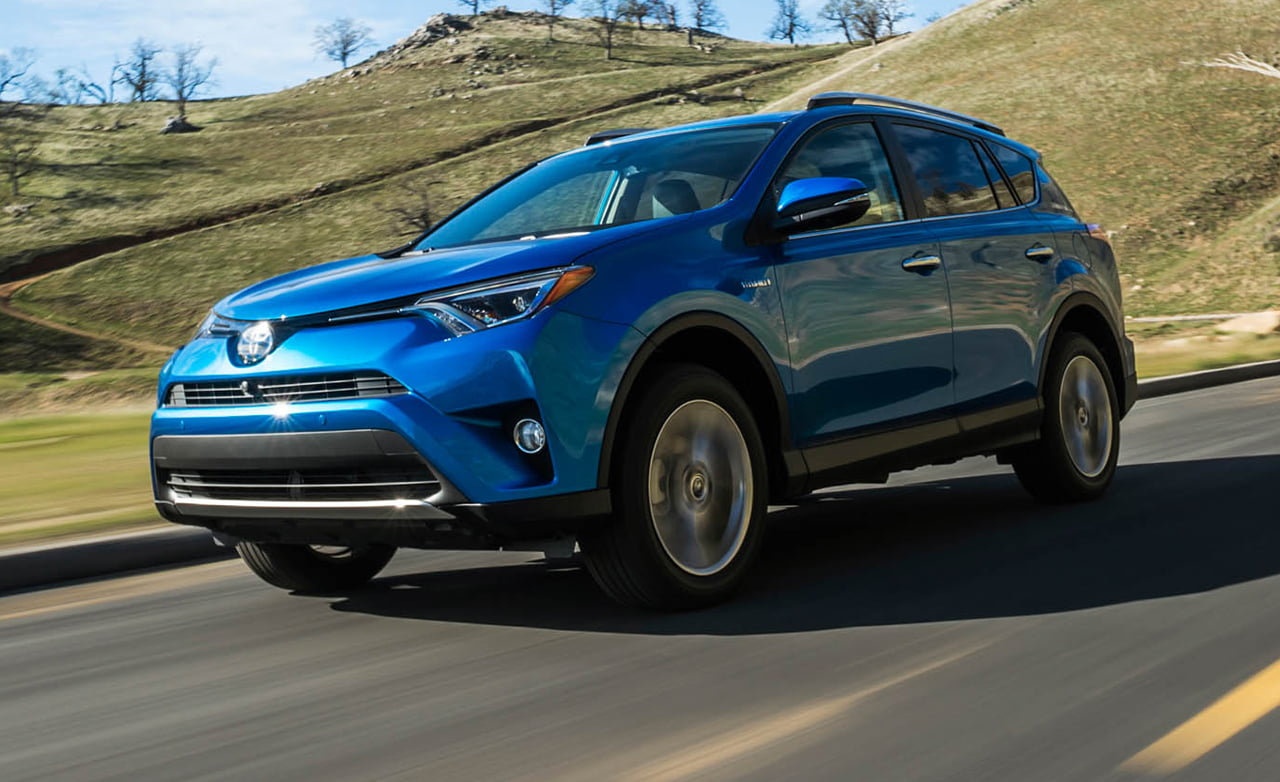
Toyota invented the compact-crossover SUV segment with the 1996 RAV4. Since then, the RAV4 has been a strong seller, although it has only led the segment in American sales in its first two years. By 1998, the Honda CR-V (which was introduced in 1997) took over annual sales leadership, a crown it has lost only five times to the Ford Escape, which was born in 2000.
In 2015, all three machines likely will each sell more than 300,000 units, helping to make compact SUVs the largest market segment in the country. And with the bestseller in the bunch also being the bestselling SUV overall, it’s important to Toyota that it regain sales leadership. To that end, the company will be increasing manufacturing capacity of the RAV4 from about 300,000 to 400,000 units per year by 2019, by expanding output at its Cambridge, Ontario, plant.
Renewed Again
Shoppers, of course, will have something to say about that, so Toyota is giving this fourth-generation RAV4, which was introduced in 2013, an extensive mid-cycle upgrade. In addition to several interior and exterior changes, the company has added a new SE model, as well as brought hybrid power to the RAV4 line, creating Toyota’s eighth hybrid product (including the four Prius variants).
All 2016 RAV4s sport a new front end with a higher hoodline, a more unified grille, and pseudo skid plates on all models. The general impression is a higher, wider-looking, more trucklike appearance, which apparently remains appealing even to compact-crossover buyers. In the rear, the bumper is more distinct and has less black cladding in general.
There also are a host of changes inside, starting with a new instrument cluster that puts a 4.2-inch info display between the speedometer and tachometer. There are softer surfaces on the dash and the door panels, as well as two new interior colors—Cinnamon and Nutmeg.
Homing in on Hybrid
Of course the big news is the addition of the hybrid, which is available only in two of the RAV’s four available trim levels—XLE and Limited. The hybrid powertrain is essentially carried over from the recently introduced Lexus NX300h; predictably, the NX is based on the RAV4.
Hybrid RAV4s will come only with all-wheel drive, so there’s a 150-hp, 2.5-liter, Atkinson-cycle four-cylinder up front, coupled to a 141-hp, permanent-magnet electric motor using the traditional Toyota CVT automatic. This combination powers the front wheels. The rear wheels are powered by a 67-hp electric motor that has no mechanical connection to the front wheels. This system is called AWD-i, and it allows a great degree of flexibility in the front-to-rear power split. As in most such systems, the RAV4 drives its front wheels most of the time, but Toyota says that the system looks at the driver demands and the steering-wheel position to anticipate wheelspin and engage the rear wheels before the fronts even start to slip.
The hybrid all-wheel-drive system also allows greater regenerative braking because it can capture electrical energy through all four wheels rather than just the two driven ones as in most hybrids. The system achieves EPA fuel economy of 34 mpg city and 31 highway, each 1 mpg better than the NX, most likely because the RAV is at least 230 pounds lighter. More importantly, the RAV4 hybrid’s EPA combined mpg of 33 is 8 mpg higher than the RAV4 AWD with conventional power. And the hybrid’s claimed 8.1-second zero-to-60-mph time is nearly a full second quicker than what Toyota states for the conventional model.
Here’s Where We Do (Driving) Impressions
We weren’t able to evaluate these mileage claims during a brief test drive, but the hybrid model exhibits the refinement you’d expect given Toyota’s extensive experience with this sort of powertrain. Acceleration is linear and sufficient for any circumstances short of drag racing, although you do feel some of the usual CVT “rubber-band” effect as the engine rpm and actual vehicle speed seem occasionally disconnected.
Similarly, brake feel lacks the regular RAV’s linear response thanks to the difficulty of blending the regenerative braking with the hydraulic portion of the system. However, these brakes are improving with every new Toyota hybrid and you can still drive the RAV4 smoothly.
Otherwise, the RAV4 hybrid is comfortable and capable, albeit not at all sporting. The ride is smooth and well controlled, but if you start urging it quickly on a twisty road, you feel the hybrid powertrain’s additional 320 pounds and might prefer a little less body roll. The same goes for the steering, which lacks the direct feel of the Mazda CX-5’s—or the new RAV4 SE’s, for that matter.
Interior and Pricing
The revised interior comes off well, with useful information in the new central display on the cluster and noticeably plusher feel at the various touch points. In real-world usage, the RAV4 is a bit tighter in the back seat than several of its competitors, but luggage volume is decent at 36 cubic feet behind the back row and 71 cubic feet with it folded. That’s only about three cubic feet less than the nonhybrid model. And the liftover height in the rear cargo area is impressively low.
The price increment for the hybrid powertrain is only $700. That means $29,270 for the XLE and $34,510 for the Limited. Astute RAV4 shoppers might notice that baked into the XLE price is an increase of another $1000 or so from the nonhybrid 2015 model, but at least some of that is offset by a higher level of standard equipment for the refreshed version. For example, Toyota’s Entune Audio Plus infotainment system with a high-res LCD screen and Connected Navigation now is standard on the XLE, along with a power liftgate, halogen projector-beam headlights, and proximity access and ignition.
The RAV4 Limited has jumped in price more than $3000 to make room for the new SE model. It also has a few more standard features than before. For those who can face life without Toyota’s SofTex faux leather upholstery and LED lights, we’d reckon that the XLE hybrid is the better value.
[“source-caranddriver”]





